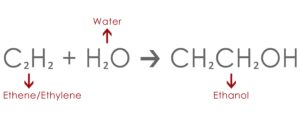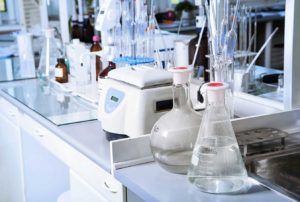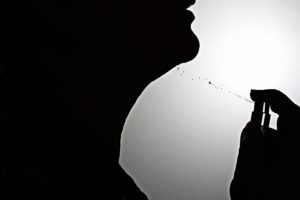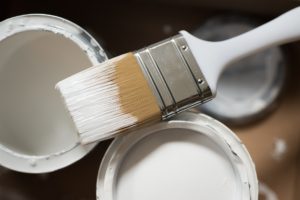Industrial Preparation of Ethanol
Fermented Alcohol vs. Synthetic Ethanol
Different Ethanol Options for Non-beverage Use and Industrial Use
There is more to alcohol than what is stocked in our favourite bar. It’s a vital component in many of the everyday items we encounter from cough syrup, window cleaner to perfumes. Ethanol for non-beverage and industrial uses is a vast and complex subject. It can’t be easily organised with distinct categories or classifications, which means it can get confusing if you are looking to buy ethanol.
To help you navigate this complex arena, this post will explore the different options of ethanol available and what they are commonly used for.
Alternatively, you can contact one of our experts for any information!
[If you want information on beverage Ethanol, see our guide on neutral spirits for beverage use]
Industrial Preparation of Ethanol
Basic Properties of Ethanol
Ethanol is a colourless, odourless, flammable (it burns with a bright blue flame) liquid, with a boiling point of 78.5°C and a low melting point of -114.5°C.
Fermentation Alcohol
The method that we are most familiar with is the production of ethanol from the fermentation of sugars in organic materials such as grains, potatoes, grapes, sugarcane, and beet. The yeast breaks the glucose down into ethanol (alcohol) and carbon dioxide. After the fermentation process, the material undergoes distillation and rectification to reach the desired ABV level.
Synthetic Ethanol

The second way to produce ethanol is synthetically. Synthetic ethanol is a petroleum-derived product. The first production of synthetic alcohol was done in the late 1920s by a Union Carbide subsidiary company. Synthetic ethanol is produced from the hydration of ethane (a petroleum by-product) via steam and a catalyst, such as phosphoric acid.
Fermented Alcohol vs. Synthetic Ethanol
While synthetic alcohol is chemically identical to ethanol made via fermentation they are used by different industries, synthetic ethanol is used for industrial feedstock but not commonly used in the making of spirits or other products directly consumed by humans. This is not due to any quality issues, in fact, synthetic alcohol can be extremely clean and fermented alcohol full of impurities (which are removed before consumption). The reason for the differing use is largely an ethical one, concerning humans consuming petroleum and petroleum-based products. Again there isn’t a universal ruling and depending on where the ethanol is being bought and sold, you may find synthetic alcohol used in products used by humans.
That being said, the origin and manufacturing process often deter various parties from using synthetic ethanol and instead of using fermented ethanol. For the purpose of focus, this post will only be looking at fermented ethanol.
Different Ethanol Options for Non-beverage and Industrial Use
Producers often divide their ethanol offerings by industry (e.g. food and drinks, pharmaceutical), ABV percentages, level of impurities or whether or not it’s potable. The list below covers the most common ethanol types on the market.
Anhydrous Ethanol (99% ABV / 198 proof)
Extra-neutral anhydrous ethanol also known as absolute ethyl alcohol is made up of 99.9% ethanol and 0.1% of water and is used in a lot of industrial settings. Anhydrous ethanol is not made the same way as your typical 95-96% ethanol because the liquid cannot be repeatedly distilled until it reaches 99% ABV. This is because the ethanol and water mixture is an azeotrope mixture. When the mixture reaches a percentage of 96% ethanol and 4% water it will stay at a constant boiling point and the composition of the mixture cannot be altered, it will stay the same regardless of how many more rounds of distillation it goes through. To reach 99% ABV additives like the chemicals cyclohexane need to be added in order for it to distil further.
An alternative method to produce absolute alcohol from your typical 96% neutral ethanol is by using a molecular sieve to increase its ABV level. The sieve absorbs the water molecules while leaving behind the larger ethanol molecules.
What is Anhydrous Ethanol used for?
- Solvent for industrial application and in laboratories
- Antiseptic
- Fuel Ethanol / Motor fuel
- Inks
Rectified Spirit (95-95% ABV / 190 proof)
The ethanol in this category consists of ethanol of varying qualities which helps to determine its end-use. Therefore it’s not uncommon to find suppliers (like Ethimex) of rectified spirits to divide this category by industry use. There are also industry-specific certifications that need to be met in order to buy rectified spirits.
Rectified spirits, also commonly known as neutral spirits, are made from the fermentation of grains, molasses, and other agricultural products. Rectified spirits are distilled to 95-96% ABV before being diluted to a bottling percentage of 40-50% ABV depending on the spirit
What is rectified spirit used for?
- Spirit (and other alcoholic beverage) production. To find out more see our guide to neutral spirits for beverage alcohol.
- The food industry, e.g. in vinegar production
Pharmaceutical Grade and Food Grade Alcohol (95-96% ABV / 190 proof)

Alcohol and medicine have been intertwined with each other for centuries. In the pharmaceutical and medical industry, alcohol is predominately used as an antiseptic. An antiseptic solution contains an ABV of 70% or higher can kill 99.9% of bacteria. Ethanol also has its uses as a solvent and preservative in medicines in a lot of everyday and over the counter medicine such as cough syrup. Ethanol is also used as a rubefacient in medicinal treatments. Rubefacient is a substance that makes skin tender in order to make medicine be more easily absorbed.
In the food industry, ethanol is a key component in flavour extraction and concentration. However, no ethanol is left in the final product.
What is Pharmaceutical & Food Grade Alcohol used for?
- Vinegar
- Flavour extracts
- Bitters and tinctures
- Food dyes
- Cough syrup
- Antibiotics and vaccines
- Decongestants
- Cosmetics, shampoos, soaps, deodorants, perfumes
Food and pharmaceutical grade alcohol have to go through strict quality control procedures and often by several different local, governmental and independent organisations such as the USP (US Pharmacopeia), European Pharmacopeia, HACCP (Hazard Analysis and Critical Control Point), the FDA (The Food and Drug Administration), and GMP (Good Manufacturing Practice).
Denatured Alcohol (96-99% ABV/ 190-198 proof)

Denatured alcohol is non-potable ethanol containing additives called denaturants that make it unsuitable for consumption by making the liquid toxic and bitter tasting. It is sometimes also referred to as Industrial Methylated Spirits (IMS), trade-specific denatured alcohol (TSDA) or Industrial denatured alcohol (IDA).
There are typically three to four additions needed to make denatured alcohol.
- A bitter-tasting agent
- A smelling agent
- An analytical marker
- A colour marker (usually blue or purple)
Common denaturants used:
- TBA (tert-butyl alcohol)
- Bitrex
- DEP (Diethyl phthalate)
- Ethyl Acetate
- Sucrose Octaacetate
- Methanol
- Isopropyl alcohol
- Monoethylene glycol (MEG)
- Methyl Ethyl Ketone (MEK)
Denaturants are not simply added to refrain people from drinking the product but it is also a way to avoid the taxes associated with the ethanol used in beverage alcohol and there are strict rules when it comes to this. In the EU, the EU Excise Duty Legislation states that denaturing must take place in a tax warehouse to ensure that alcohol on which excise duty has not been paid is not released and illegally sold for consumption.
Denatured alcohol can appear on labels as “SD alcohol” meaning specially denatured alcohol or “alcohol denat.”
Denatured alcohol is used in cosmetics and perfumes. Ethanol has many uses in cosmetics and perfume. It acts as a preservative, antibacterial, a solvent (e.g. in perfumes, it combines the different oils and aromas. Ethanol is the main carrier of the fragrance oils), and a substance which breaks down the skin’s barrier to let other ingredients in the cosmetics be absorbed more effectively. The ethanol also gives a cooling, refreshing sensation on the skin.
What is denatured alcohol used for?
- Rubbing alcohol
- Hand sanitiser
- Cosmetics
- Perfumes
Industrial Grade Ethanol

Under the industrial-grade ethanol category are a breadth of products which include foreshots & feints (also known as heads & tails/mauvis gout), rectified extra-neutral ethanol (REN), and crude industrial grade ethanol/low-grade REN (Korean grade B). With the exception of REN, these types of ethanol are typically the waste or by-products of ethanol distillation. Too low-quality to be used in consumer goods but still retaining many valuables properties like being antibacterial, to be useful in many other non-consumer goods context. Re-using the waste or by-products of ethanol distillation is also a great way to reduce a distillers environmental footprint.
What is industrial grade ethanol used for?
- Solvents
- Detergents
- Paints and Inks
- Adhesives
- Cleaning
- Anti-freeze
As you can probably tell at this point, the world of non-beverage use of ethanol is vast and is not always the easiest category to navigate. If you would like further clarification or advice on which ethanol type is best suited for your purpose contact us today or you can find our full product list of non-beverage ethanol here or industrial ethanol here.


